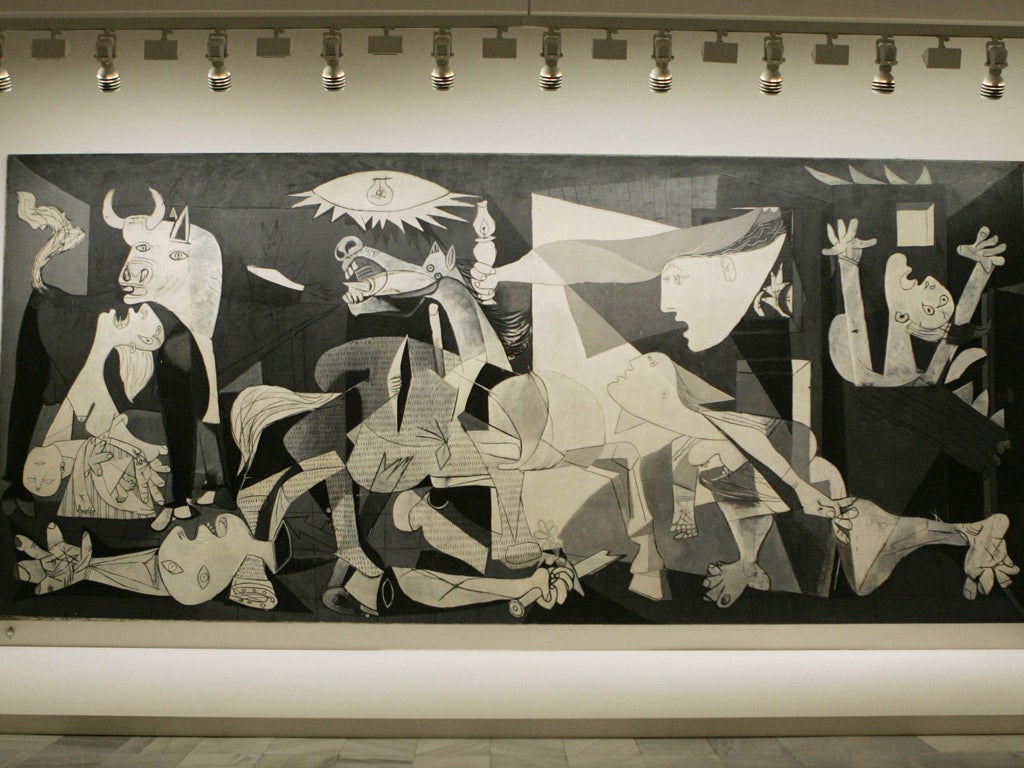Robot research aims to assess damage to Picasso masterpiece

Every night, after the last visitor to Madrid's Reina Sofia Museum has left, the prestigious art gallery's newest curator flickers into life. The expert is a robot, which has begun the most exhaustive research ever performed on Picasso's renowned masterpiece, Guernica. The mission: to establish the extent of the damage the 75-year-old painting has sustained during its turbulent life.
Running on a network of rails across Picasso's imposing 3.5m x 7.8m work, the robot will use infrared and ultraviolet scanning technology.
Restorers will then be able to navigate around a 3D virtual image of the painting.
Guernica came to be when the Spanish Republican government commissioned Picasso to create a work for the Universal Exposition in Paris in 1937. The result was a depiction of black and white tormented figures reflecting the horrors of the civil war that gripped Spain at that time. The painting's title is the name of the ancestral capital of northern Spain's Basque region, which was bombed that same year. Historians estimate the attack killed up to 1,600 people.
After the exhibition, the painting went on a 20-year world tour. The rolling and unrolling of the canvas for took its toll and by the 1960s, even Picasso declared "enough is enough".
But it was not until 1981 that Guernica made its final journey to Spain from the Museum of Modern Art (MOMA) in New York, where it had been on loan from Picasso until democracy had been restored at home in Spain.
Telefonica, a Spanish telecoms company sponsoring the new project at the Reina Sofia, said in a statement that it is the first "full-scale health check" on the painting since 1998, when it was judged to be in a "very precarious condition". That analysis found 129 imperfections in Guernica, attributed to its chaotic history. The precious artwork was banned from ever being moved again.
Experts say this new study will be more comprehensive than any that have gone before and will finally determine the true state of Guernica.
"This is a real breakthrough," Granada University Fine Arts professor Teresa Espejo, an expert in restoration, told i.
X-rays allow restorers to see "the inside of the painting" and examine the state of the canvas, but ultra-violet imaging will also show any repainted sections and mistakes, and infra-red will even display underlying sketches, Ms Espejo says.
However, far from putting the controversy over Guernica to rest, the results of the robot's work may mark a new phase in its tumultuous life. If it shows that the painting could be fit for another move, its status as a permanent exhibit at the Reina Sofia would be called into question.
Miguel Zugaza claims that Guernica's rightful home is in his gallery – the Prado – as Picasso himself stated in his will.
And to complicate matters further, Spain's Guggenheim Museum in the Basque city of Bilbao (20 miles from the town of Guernica) has also staked its claim to the artwork.
Join our commenting forum
Join thought-provoking conversations, follow other Independent readers and see their replies
Comments